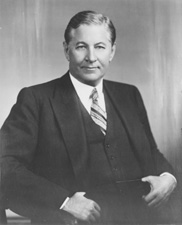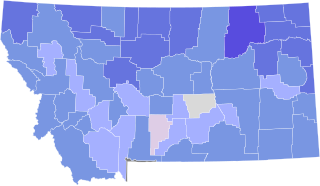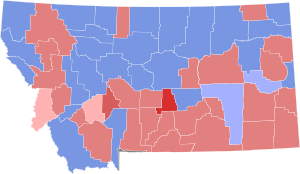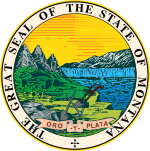
The 1978 United States Senate elections were held on November 7, in the middle of Democratic President Jimmy Carter's term. The 33 seats of Class 2 were contested in regular elections. Special elections were also held to fill vacancies.

The 1976 United States Senate elections was an election for the United States Senate. Held on November 2, the 33 seats of Class 1 were contested in regular elections. They coincided with Democrat Jimmy Carter's presidential election and the United States Bicentennial celebration. Although almost half of the seats decided in this election changed parties, Carter's narrow victory did not provide coattails for the Democratic Party. Each party flipped seven Senate seats, although, one of the seats flipped by Democrats was previously held by a Conservative.

The 1964 United States Senate elections were held on November 3. The 33 seats of Class 1 were contested in regular elections. Special elections were also held to fill vacancies. They coincided with the election of President Lyndon B. Johnson by an overwhelming majority, to a full term. His Democratic Party picked up a net two seats from the Republicans. As of 2023, this was the last time either party has had a two-thirds majority in the Senate, which allowed the Senate Democrats to override a veto, propose constitutional amendments, or convict and expel certain officials without any votes from Senate Republicans. However, internal divisions would have prevented the Democrats from having done so. The Senate election cycle coincided with Democratic gains in the House in the same year.

The 1954 United States Senate elections was a midterm election in the first term of Dwight D. Eisenhower's presidency. The 32 Senate seats of Class 2 were contested in regular elections, and six special elections were held to fill vacancies. Eisenhower's Republican party lost a net of two seats to the Democratic opposition. This small change was just enough to give Democrats control of the chamber with the support of an Independent who agreed to caucus with them, he later officially joined the party in April 1955.

The 1948 United States Senate elections were elections which coincided with the election of Democratic President Harry S. Truman for a full term. The 32 seats of Class 2 were contested in regular elections, and one special election was held to fill a vacancy. Truman had campaigned against an "obstructionist" Congress that had blocked many of his initiatives, and in addition the U.S. economy recovered from the postwar recession of 1946–1947 by election day. Thus Truman was rewarded with a Democratic gain of nine seats in the Senate, enough to give them control of the chamber. This was the last time until 2020 that Democrats flipped a chamber of Congress in a presidential election cycle.

Lee Warren Metcalf was an American lawyer, judge, and politician. A member of the Democratic Party, he served as a U.S. Representative (1953–1961) and a U.S. Senator (1961–1978) from Montana. He was the first of Montana's U.S. Senators to be born in the state, and was Permanent Acting President pro tempore of the Senate, the only one to hold that position, from 1963 until his death in 1978.

Arnold Olsen was a U.S. Democratic politician who served as the Attorney General of Montana from 1949 to 1957, and as a member of the United States House of Representatives from Montana's 1st congressional district from 1961 to 1971.

Scott Leavitt was a U.S. Representative from Montana. He served as chairman of the House Committee on Indian Affairs.

Wellington D. Rankin was a Republican public official from the state of Montana.

The 1918 United States Senate election in Montana took place on November 5, 1918. Incumbent United States Senator Thomas J. Walsh, who was first elected to the Senate in 1912, ran for re-election. He won the Democratic primary uncontested, and was opposed in the general election by Oscar M. Lanstrum, a former State Representative and the Republican nominee, and Jeannette Rankin, one of two United States representatives from Montana's at-large congressional district and the nominee of the National Party. Walsh narrowly won his second term in the Senate.

The 1924 United States Senate election in Montana took place on November 4, 1924. Incumbent United States Senator Thomas J. Walsh, who was first elected to the Senate in 1912 by the state legislature, and re-elected in 1918 by popular vote, ran for re-election. He was unopposed in the Democratic primary.

The 1934 United States Senate special election in Montana took place on November 6, 1934. Incumbent United States Senator John E. Erickson, who, as governor, had appointed himself to the seat in 1933 upon the death of Thomas J. Walsh, ran for re-election. However, he was defeated in the Democratic primary by James E. Murray, who was the former Silver Bow County Attorney and the Chairman of the State Advisory Board of the Public Works Administration. In the general election, Murray defeated Scott Leavitt, a former United States Congressman who had represented Montana's 2nd congressional district, and an independent candidate in a landslide to win his first term in the Senate.

The 1930 United States Senate election in Montana took place on November 3, 1936. Incumbent United States Senator James E. Murray, who was first elected to the Senate in a special election in 1934, ran for re-election. He narrowly emerged from a competitive and close Democratic primary, wherein he was challenged by United States Congressman Joseph P. Monaghan, who represented Montana's 1st congressional district. In the general election, Murray was opposed by Thomas O. Larson, a State Senator and the Republican nominee, and Monaghan, who, after losing the primary, ran as an independent candidate. Murray ended up winning a second term, and his first full term, in a landslide, defeating both of his opponents by a comfortable margin.

The 1948 United States Senate election in Montana took place on November 2, 1948. Incumbent United States Senator James E. Murray, who was first elected to the Senate in a special election in 1934 and was re-elected in 1936 and 1942, ran for re-election. After winning the Democratic primary, he faced Tom J. Davis, an attorney and the Republican nominee, in the general election. Following a narrow re-election in 1936, Murray significantly expanded his margin of victory and comfortably won re-election over Davis, resulting in him winning his fourth term and his third full term in the Senate.

The 1954 United States Senate election in Montana took place on November 2, 1954. Incumbent United States Senator James E. Murray, who was first elected to the Senate in a special election in 1934 and was re-elected in 1936, 1942, and 1948, ran for re-election. After winning the Democratic primary against trivial opponents, he advanced to the general election, where he was opposed by Wesley A. D'Ewart, the Republican nominee and the United States Congressman from Montana's 2nd congressional district. A contentious and close election ensued, but ultimately, Murray was able to narrowly win re-election over D'Ewart to a final term in the Senate.

The 1960 United States Senate election in Montana took place on November 8, 1960. Incumbent United States Senator James E. Murray, who was first elected to the Senate in a special election in 1934 and was re-elected in 1936, 1942, and 1948, and 1954, declined to seek re-election, creating an open seat. United States Congressman Lee Metcalf won out in a crowded Democratic primary and faced off against former United States Congressman Orvin B. Fjare, who won in a similarly-crowded Republican primary. Following a close general election, Metcalf narrowly defeated Fjare to win his first term in the Senate.

The 1922 United States Senate election in Montana took place on November 7, 1922. Incumbent United States Senator Henry L. Myers, who was first elected to the Senate in 1910, and was re-elected in 1916, declined to seek re-election. Former United States Attorney Burton K. Wheeler won the Democratic primary and advanced to the general election, where he faced Carl W. Riddick, the United States Congressman from Montana's 2nd congressional district and the Republican nominee. Ultimately, Wheeler defeated Riddick comfortably and won his first term in the Senate.

The 1928 United States Senate election in Montana took place on November 6, 1928. Incumbent United States Senator Burton K. Wheeler, who was first elected to the Senate in 1922, ran for re-election. After successfully defeating several challengers in the Democratic primary, Wheeler advanced to the general election, where he faced Republican nominee Joseph M. Dixon, the former Governor of Montana who had previously served in the United States Senate from 1907 to 1913. Though the election was closer than Wheeler's first election, he still managed to defeat Dixon to win his second term in the Senate.

The 1952 United States Senate election in Montana took place on November 4, 1952. Incumbent United States Senator Zales Ecton, who was first elected to the Senate in 1946, ran for re-election. Ecton won the Republican primary uncontested, and advanced to the general election, where he faced Mike Mansfield, the United States Congressman from Montana's 1st congressional district and the Democratic nominee. Following a close campaign, Mansfield narrowly defeated Ecton, winning his first of several terms in the Senate.

The 1964 United States Senate election in Montana took place on November 3, 1964. Incumbent United States Senator Mike Mansfield, who was first elected to the Senate in 1952 and was re-elected in 1958, ran for re-election. Mansfield won the Democratic primary in a landslide, and advanced to the general election, where he faced Alex Blewett, the Majority Leader of the Montana House of Representatives and the Republican nominee. Though Mansfield's margin was quite reduced from 1958, he still overwhelmingly defeated Blewett and won his third term in the Senate in a landslide.





















